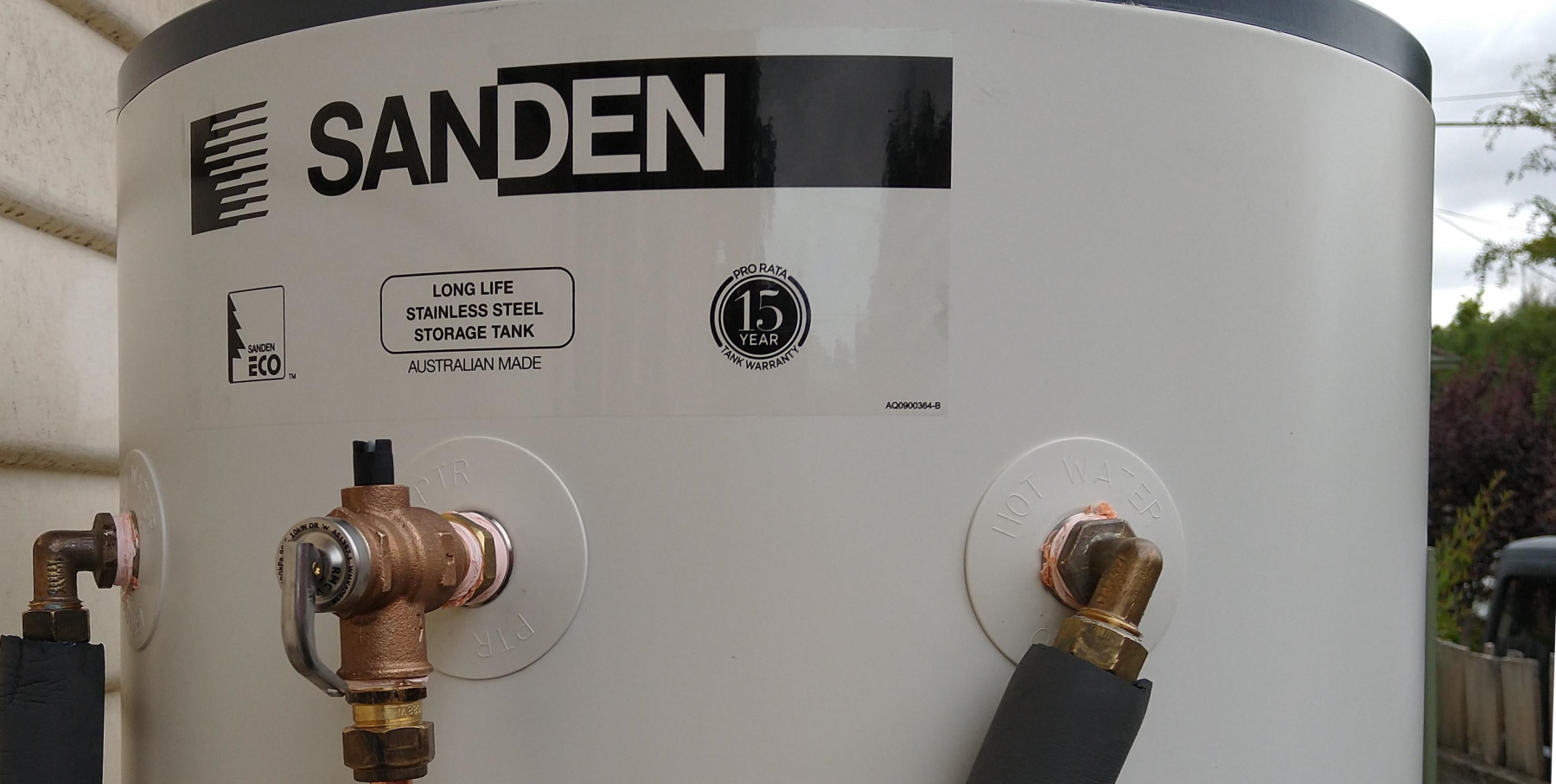There’s a lot of doom and gloom from COVID-19 at the moment. So here’s something positive: I got a new hot water system.
Twelve years ago this month I got solar hot water installed: a collector panel on the roof, a tank to store the water, and a gas booster.
I thought it was going to be great. But to be honest, I never really saw a great difference in the gas bills. Over summer (when the heating doesn’t get used), gas cooking and water is still about $2 per day.
Recently the hot water has been playing up. The gas booster unit started leaking, and then stopped working – meaning the morning shower was somewhere between room temperature and lukewarm.
Twelve years perhaps isn’t a bad innings for a hot water system, so I started looking at replacements.
One philosophy is to migrate homes completely off natural gas, because unlike electricity, it’s not only non-renewable, it can never be renewable.
If you can get completely off gas, you also save a bundle in service fees. For me, this involves upgrades for hot water, heating (also due for an upgrade), and cooking (my stove is ancient, so ditto).
For hot water, I’ve ended up with a Sanden electric heat pump. A fair bit more expensive than other options, but they’re known for being very efficient. It was installed on Friday.
Despite COVID-19, the installers said they’re taking precautions, but they’d keep doing jobs for now – thankfully most of their work is outside, with minimal time indoors or directly interacting with people. And we avoided shaking hands.
A heat pump is best when accompanied with solar PV panels. This is the next step. There may be a challenge due to a lack of roof space, but this should cut my household emissions even further.
It’s a reminder that when the current crisis is over, society will still need to properly resolve climate change. COVID-19 is getting a serious response. Climate change will be just as big, if not bigger (but will probably creep up on us more slowly) if it’s not addressed properly.

5 replies on “Getting into hot water”
I had a gas storage system that was installed long before I got my place and lately the gas bills have been slowly increasing. So late last year I started shopping around and I finally had a Reclaim heat-pump system put in earlier this year by Earthworker Co-op. It is very similar in specification and price to Sanden and when it was being put in, I convinced the electrician putting in a new circuit to also hook up one of the electrical meters I have to spare.
So far I’ve been happy with it but with the new system the installer had to put in tempering (I think the old system didn’t have tempering and perhaps regulations didn’t require one back then) and I think he put it in with too much tampering so I have been slightly less than happy with the hot water pressure and at the moment I am still figuring out the sweet spot for perfect pressure and just the right temperature within operational specifications.
Nevertheless, I’ve been quite happy with it. Based on the metering, the heat-pump has been consuming between 1.70 to 2.5 kWh or about 40 to 50 cents per day based on my household’s usage. I have also set it so it only operates between 10 am to 4 pm (when the solar is working far in excess of my household usage) so that running cost is virtually free. There is also the option of running it for 24 hours, running it in the early hours of the morning for people with off-peak tariff or a custom time option for those with flexible metering.
I worked briefly for Origin Energy shops (previously Gas and Fuel Shops) in approx 2008-2009. We were not allowed to sell heat pumps in Victoia when I worked for them.
Good stuff Daniel!
It’s a long road but totally worth it when you see your gas bill disappear and your electricity bill shrink to close to 0.
@Peter, that’s crazy! Were you allowed to sell old school electric HWS?
[…] Heat pump electric hot water (replacing gas-boosted solar hot […]
[…] water heater – I got one of these in March 2020, a pre-emptive strike against the old gas boosted solar unit failing. It works […]